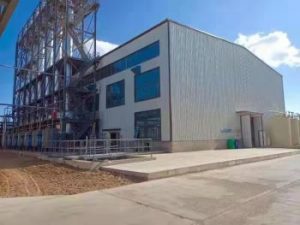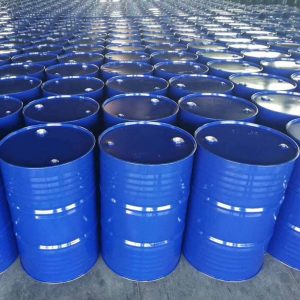Rubber Metal Bonding – Cobalt Salt Detail
Cobalt salts are substances consisting of cobalt ions and acid roots, which can also contain a certain percentage of other ions. There are many different kinds of cobalt salts. There are many types of cobalt salts, such as CoX2, CoF2, CoCl2, CoBr2, CoI2, CoOCo(OH)2, CoCO3, Co(NO3)2, CoSO4 and so on.

1 Introduction
Cobalt salt is a substance composed of cobalt ions and acid roots, which can also contain a certain proportion of other ions. There are many different kinds of cobalt salts. Cobalt salt has CoX2, CoF2, CoCl2, CoBr2, CoI2, CoOCo(OH)2, CoCO3, Co(NO3)2, CoSO4 and many other types.
English name: cobaltsalt
Appearance and properties: Rose red monoclinic crystal.
Melting point(℃): 96~98
Relative density (water=1): 1.948(25℃)
Boiling point(℃): 420(-7H2O)
Molecular formula: CoSO4-7H2O
Molecular weight: 281.15
Solubility: soluble in water, methanol, slightly soluble in ethanol. Cobalt salt
2 Varieties of cobalt salts
Organic acid cobalt salt is a special binder for rubber and brass-plated or galvanized steel wire cord, which can be used alone in the manufacture of high-performance steel wire radial tires and high-load steel wire hoses.
According to the understanding of Huacheng metal network, there are several types of cobalt salts widely used at home and abroad, such as cobalt naphthenate, cobalt stearate, cobalt neodecanoate and cobalt boronylated: commonly used are cobalt naphthenate (cobalt content: 10-11%), cobalt stearate (cobalt content: 9-10%), cobalt neodecanoate (cobalt content: 20-21%) and cobalt boron modified neodecanoate (cobalt content: 22-23%).
3 Cobalt salt dosage
Cobalt salt is used to improve the adhesion of rubber and metal, which has been widely recognized and used in radial tires and steel wire hoses. Cobalt salts can be added directly to rubber alone as a rubber-to-metal bonding enhancer. In addition to the direct use of cobalt salts as a bonding enhancer, many companies use cobalt salts in combination with methacrylate (white) resin bonding systems due to differences in products and bonding technologies of each company. However, whether used alone or in combination, the cobalt content of the adhesive must be controlled regardless of the type of cobalt salt. This is because from the bonding mechanism, if the cobalt ion content in the rubber is too high, it will not only promote the generation of a large number of inactive copper sulfide, but also catalyze the aging of rubber hydrocarbons; while the cobalt ion content is too low, the brass is difficult to generate active copper sulfide with sulfur, so that a good bond cannot be obtained. Considering the performance of the rubber formula itself, adding a small amount (moderate amount) of cobalt salt is beneficial to bonding, but the high ratio of cobalt salt is not only harmful to the adhesion after steam aging, but also has a detrimental effect on the strong elongation performance of the rubber after thermal aging.

It is usually recommended that the amount of cobalt salt should not exceed 0.3% of the mass of the rubber hydrocarbon in the formulation, i.e. no more than 0.3 parts of metallic cobalt in 100 parts of rubber hydrocarbon. Due to the differences in technology of each company, this dosage is for reference only.
Since the average molecular weight of various cobalt salt binders varies, it is necessary to convert the actual amount of cobalt metal required into the number of parts of cobalt salt binder in the formulation. For this purpose, the actual number of parts of the formulation can be calculated by the following formula:
Number of parts in the formula = number of parts of cobalt metal / percentage of cobalt in the product (the amount of cobalt metal in the formula should be between 0.15 and 0.35 parts)
Example: Calculate the number of parts of RC-B23 (cobalt content: 23%) binder with 0.25 parts of cobalt metal added to the formula.
Number of parts = 0.25/23% = 1.08 parts
Second, several common adhesive enhancer system and features ( y2 p N4 e. ?3 ]’ t7 {. B5 S2 u7 o( f, }
1. Cobalt bonding system 7 Q) B% i( V3 y- r
The organic cobalt salts: cobalt stearate, cobalt decanoate, cobalt naphthenate and cobalt borylate, etc. + B7 m, _, `( ? ?” ?
2. inter, a, white bonding system; k) ]9 l0 T) L+ i1 G
A common adhesive added to the rubber, its composition is resorcinol giving body, methylene giving body and white carbon black. It can bond rubber to fibers, metals, etc.
3. Kaimarock, lek sodium and other coated adhesives) S7 [9 t; c5 O6 v& j. t$ I2 Y5 o
The bonding system for bare steel and rubber bonding effect is more ideal, but the heat resistance is poor, the product due to constant contact with the hot environment and the product itself endogenous heat and loss of due effect. : i, |” O( z- U+ L! B
4. m, A, white – cobalt system2 e8 s! q8 B: D. `& b& Q
There are relevant literature, combined with years of practical evidence, between, a, white system and cobalt salt system combined, the bonding strength remains high after aging in moisture, so it is preferred.
Third, the main varieties of cobalt salt-based adhesive enhancers, the market situation 1 i& n$ s ]” u3 ?0 ?4 Z) `) J” G5 ], G) h# X6 \
Cobalt salt type bonding enhancer includes cobalt stearate, cobalt decanoate, cobalt naphthenate and cobalt borylate four types. Most manufacturers choose cobalt decanoate and cobalt borylate, when using different varieties of cobalt content to calculate the amount of this product added.
1. Cobalt decanoate ( ~* ? & ~5 ~/ M/ e- ]: @’ E: U
Cobalt decanoate is a carboxylic acid type cobalt salt bonding enhancer, cobalt content (mass fraction %, the same below) is 20.5 ± 0.5, softening point 85 ~ 110 ℃. }; V( ?” e4 {‘ }+ j
2. cobalt boride& z4 m+ L* |+ @4 M, S
The cobalt borylate is a borylated carboxylic acid line cobalt salt bonding enhancer with a cobalt content of 22.5±0.5. It contains boron and has good corrosion resistance and flame retardancy. 7 D( c+ d+ ~/ h
3. cobalt stearate cobalt stearate is a single carboxylic acid type cobalt salt, cobalt content of 9.5 ± 0.5, softening point 80 ~ 100 ℃. D( w2 F1 O! `& f$ S
4. cobalt naphthenate2 g3 o&B’. ~0 _- l9 U/ O8 a1

Z cobalt naphthenate for high acid value naphthenic acid and cobalt synthesis products, cobalt content ≥ 10.0, softening point 80 ~ 100 ℃. China’s radial tire industry started late, most of the raw and auxiliary materials required for the production of radial tires also rely on imports to solve, especially cobalt salt bonding enhancer all rely on foreign imports. In order to achieve the goal of localization of radial tires raw materials, the former State Planning Commission and the Ministry of Chemical Industry has organized a series of national “seventh five-year plan”, “eight five-year plan” key scientific and technological research, the initial realization of this series of products localization of this goal. In recent years, with the rapid development of China’s radial tire industry, the market demand for cobalt salt adhesion enhancers has increased year by year, with the total domestic market demand reaching 2,500-3,000 tons in 2006. The pace of localization of cobalt salt is also accelerating year by year, but the current imports still account for 60% of the market demand. Fourth, the cobalt salt bonding enhancer bonding mechanism of all the cobalt salt bonding enhancer in the rubber and metal bonding process are not directly involved in the reaction, only to promote the bonding role. Cobalt salt bonding enhancer for rubber and plated brass, galvanized steel wire bonding to promote the mechanism: rubber before vulcanization, with cobalt salt bonding enhancer rubber and plating is simply contact, without any interpolation connection; after vulcanization, rubber and plating between the formation of a new layer of material, that is, the newly formed metal sulfide layer, neither the chemical measurement of copper sulfide layer and zinc sulfide layer. Since they have the activity to continue the reaction, they can diffuse to the interface layer through the vulcanization bridge with the rubber vulcanization to generate the chemical bonding of the copper sulfide – rubber vulcanization, i.e., the bonding reaction between the rubber and the plating layer is produced. The divalent cobalt ion in the cobalt salt bonding enhancer can promote the growth of copper sulfide on the surface of the copper-plated steel wire, which helps to fix the vulcanized rubber on the copper-plated steel wire. % I% f/ J% ^% r7 o) ^
V. Tire retreading process methods Currently, tire retreading methods usually use the traditional hot fluidization method and pre-cure retreading process. The overall technical level of China’s retreading industry is low, still dominated by the traditional thermal retreading method, retreading enterprises, the scale is relatively small. The cost of retreading tires using the traditional retreading method is much lower than that of the pre-curing retreading process. Pre-vulcanization retreading process due to the production of pre-vulcanized tread rubber pressure is much greater than the pressure of hot retreading, so the production of retreaded tires beautiful, tread especially resistant to puncture, good wear resistance, high mileage, and because the tire is vulcanized at low temperature, the degree of damage to the tire body is small, can greatly increase the number of tire retreading, with significant economic benefits. At present, foreign tire retreading has basically completed the transfer from hot curing to cold curing, due to advanced technology, the service life of retreaded tires is close to 100% of the new tires.
Six, cobalt salt bonding enhancer in the tire

